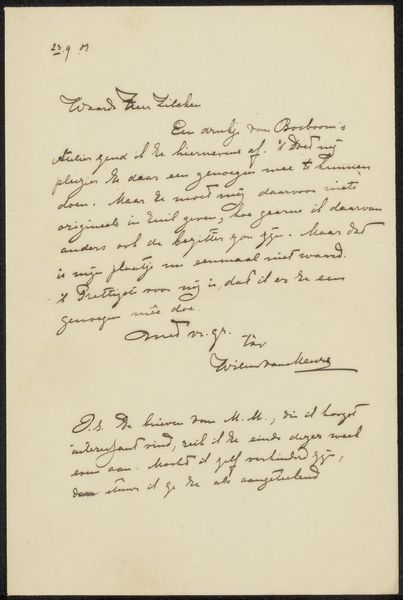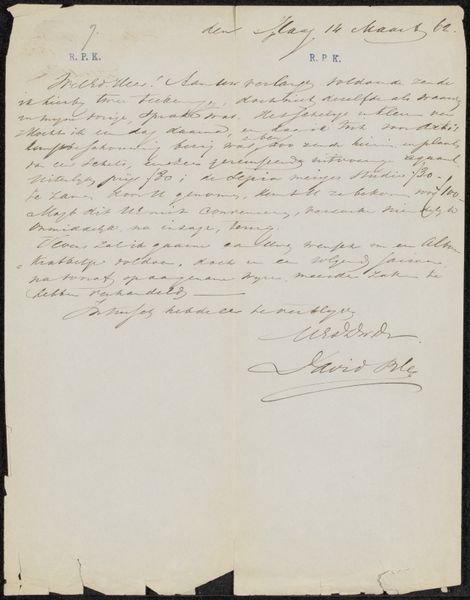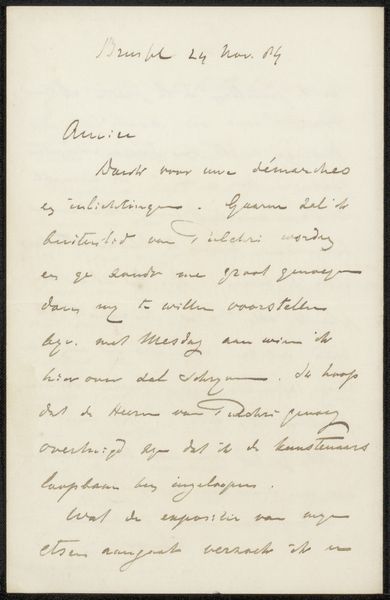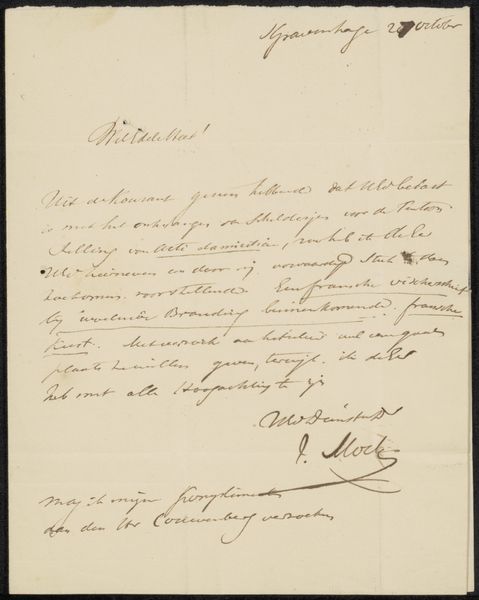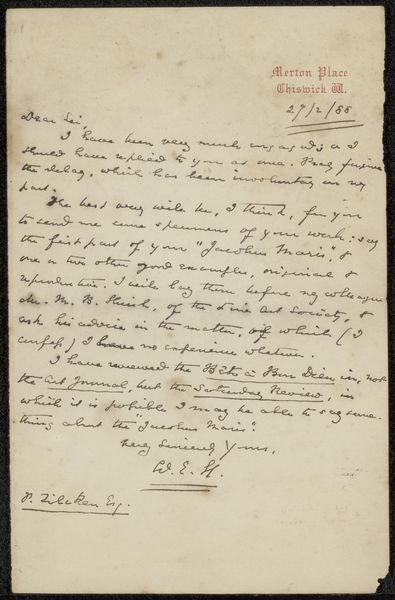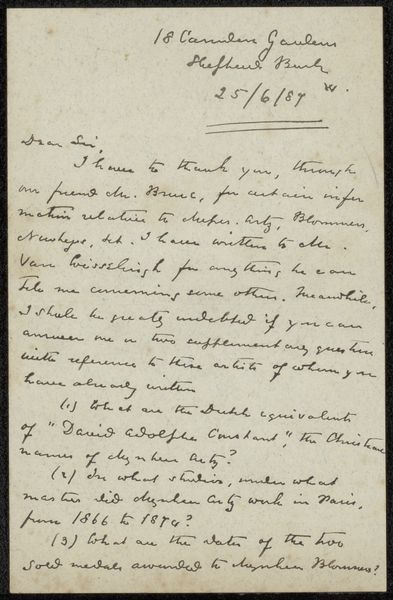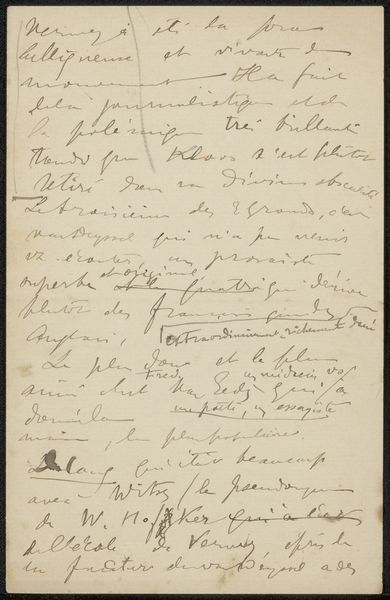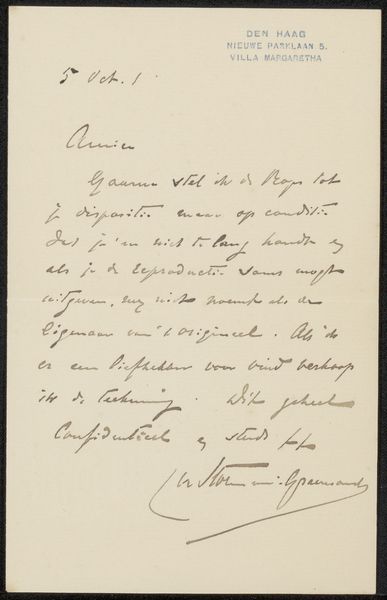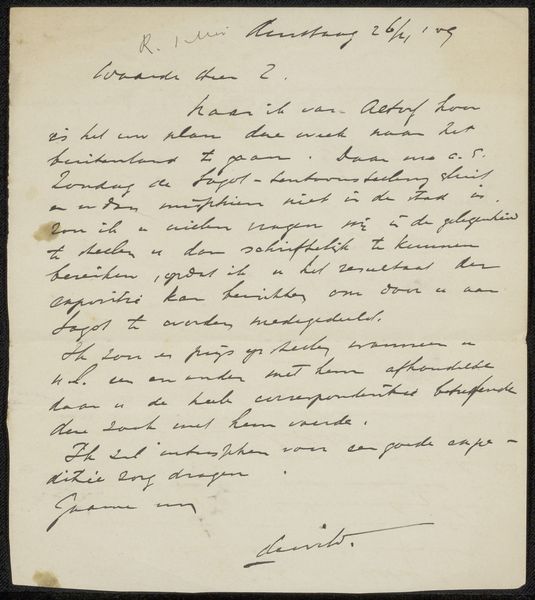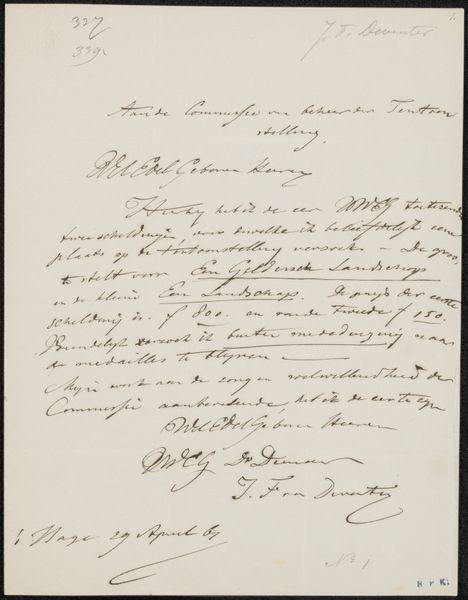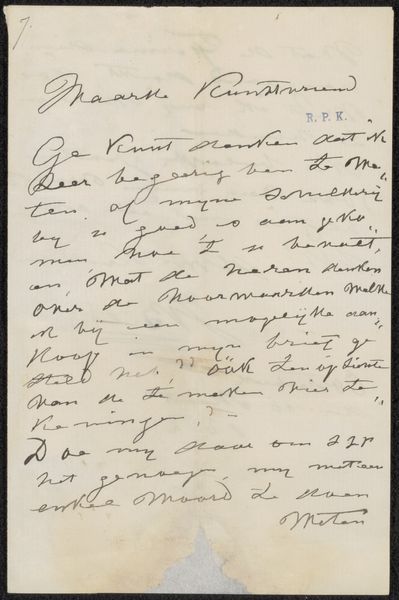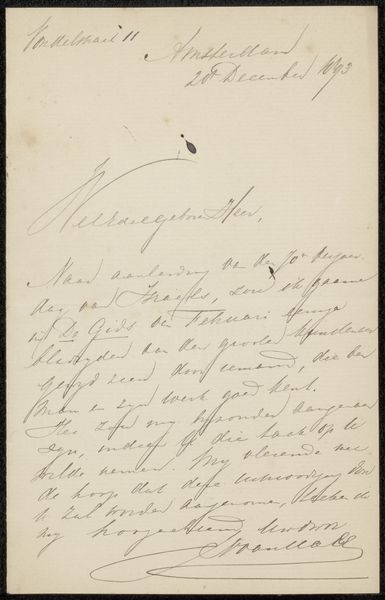
drawing, paper, ink, pen
#
pen and ink
#
drawing
#
pen sketch
#
hand drawn type
#
paper
#
ink
#
ink drawing experimentation
#
pen
Copyright: Rijks Museum: Open Domain
Curator: Take a moment to regard "Brief aan Philip Zilcken," a letter dating from around 1887-1888, crafted by William Ernest Henley. This piece resides here at the Rijksmuseum, rendered in pen and ink on paper. What catches your eye immediately? Editor: Well, formally, the density of the script creates an intriguing visual texture. The weight and flow of the ink articulate the space, forming almost abstract shapes even before deciphering the actual content of the letter. The color contrast isn’t something remarkable as it is just the shade of the ink and paper. Curator: Yes, the medium is key. Pen and ink—readily available, economical. What does this imply about Henley's process, his intended audience? Was this a draft, a working document, or something more considered, destined perhaps for wider circulation within specific circles? Editor: The handwriting suggests a certain informality, a directness. This could reflect the relationship between Henley and Zilcken, revealing something about the social dynamics between them as members of the 19th century cultural scene. But does the informality impact on the effectiveness of the message's composition, like when you read it? Does it prevent legibility? Curator: That's precisely what interests me! What was the nature of Henley and Zilcken’s professional relationship, their shared social and intellectual contexts? Understanding these production factors helps decode the letter’s significance beyond its literal meaning. The references to Mancini and Van Wisselingh invite further questions. Editor: I find it beautiful how the very imperfections of handwriting—the variations in pressure, the occasional splatters—infuse the letter with humanity. And let's observe how Henley balances the textual blocks. Can we analyze these through the lens of formalism to derive deeper meaning? Curator: Of course! Considering the social and artistic networks, Henley's letter isn't merely a personal missive but rather a crucial element of artistic exchange, providing vital clues for understanding his broader literary contributions and their making process. Editor: Indeed. By looking closer at Henley’s "Brief aan Philip Zilcken", it’s an aesthetic encapsulation of thought and human connection in time, expressed visually and historically. It prompts me to rethink about its place within the artistic movements during that era.
Comments
No comments
Be the first to comment and join the conversation on the ultimate creative platform.

